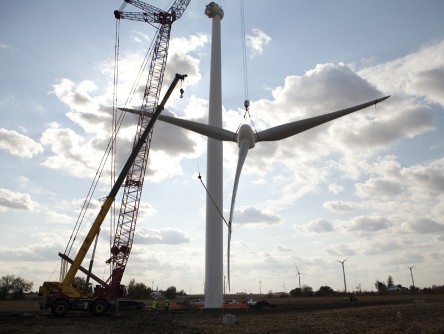
Canadian renewable energy and regulated utility company Algonquin Power & Utilities (Algonquin Power Stock Quote, Charts, News, Analysts, Financials TSX:AQN) just announced a new acquisition, this one a US coal-burning power company, Kentucky Power and AEP Kentucky Transco. How is this part of Algonquin’s multi-year strategy to “Green the Fleet”? It’s all about the energy distribution system rather than coal plants, says Algonquin CEO Arun Banskota, whose company plans to shut down the Kentucky coal-fired power plants once the deal’s done.
Oakville, Ontario-headquartered Algonquin, which owns hydroelectric, wind and solar assets along with utilities businesses in water, natural gas and electricity distribution, announced last week the $2.846 billion proposed acquisition which would see AQN subsidiary Liberty take over Kentucky Power and Kentucky TransCo from large US electric utility American Electric Power, a deal which would include the assumption of about $1.221 billion in debt. Kentucky Power owns (All figures in US dollars.)
Algonquin intends to shut down the coal-burning operations associated with the deal (Kentucky Power owns 50 per cent of a 1,560-megawatt coal-fuelled Mitchell plant in Moundsville, West Virginia) and replace them with renewable energy generation, part of its Greening the Fleet initiative which has seen the company buy and expand its renewable asset portfolio. On the capex front, for example, AQN doled out $3.14 billion over the first half of 2021 while also hitting the four GW mark in aggregate renewable power generation and its current five-year capital plan is expected to involve $9.4 billion between 2021 and 2025.
“This is a significant transaction for us,” said Banskota, speaking on BNN Bloomberg on Friday. “Part of the transaction does come with some gas and coal assets; however, what is extremely compelling for us is the opportunity to close down those coal plants and instead build over 1100 megawatts of renewable energy projects. That’s the compelling part for us.”
The Kentucky purchase had the strange characterization of being touted by both companies as a climate-friendly move. AEP has said selling its Kentucky assets will help it reach its goal of having 50 per cent of its generating capacity in renewables by 2030, while Algonquin is clear that it sees the buy as a move to a greener future, saying the acquisition will eventually involve replacing over one GW of rate-based fossil fuel generation with renewable energy.
“Basically, this is a regulated electricity generation, transmission and distribution company. [Kentucky Power] has over 225,000 retail electric customer connections, and so, the bulk of the value is in fact in the transmission distribution system,” Banskota said. “On the generation side today, given the price of new renewable energy, it is actually lower than the marginal cost of operating coal assets. So it’s, in fact a very, very compelling value proposition to close down those coal plants. As we’ve done in the past, in fact.”
Algonquin said the Kentucky Power deal should be accretive to its adjusted net earnings in the first full year of ownership and should generate mid-single digit percentage accretion going forward. As well and concurrent to the deal, Algonquin announced an $800 million bought deal involving about 44 million shares to help finance the Kentucky Power acquisition.
Algonquin’s share price has been sloping downwards since early in the year when the bubble burst on the renewable sector. Before February, renewable energy stocks enjoyed a protracted upswing but the market appears to have turned its eye to other industries in the intervening months. AQN is now down by about 14 per cent since the start of the year, whereas in 2020 the stock returned 14 per cent.
Ahead of Algonquin’s third quarter earnings report due on November 11, the company increased its revenue by 54 per cent year-over-year for the second quarter 2021, coming in with a topline of $527.5 million. Adjusted EBITDA was up 39 per cent to $244.9 million.
Algonquin’s capital expenditures over the first half of the year included $1.51 billion to develop Missouri and Kansas-based assets North Fork Ridge, Neosho Ridge and Kings Point Wind Facilities. The company said its renewable energy construction pipeline remains robust with construction ongoing at facilities in Saskatchewan, Quebec, Illinois and Ohio.
Banskota said Algonquin is developing and growing in North America alongside the trend to decarbonization of economies in the face of climate change.
“Both sides of our business, the renewable energy side and the regulated side, both stand to benefit greatly from this entire energy transformation,” Banskota said. “Last year, we had over 1,600 megawatts of solar and wind that we constructed and brought online. We continue to green the fleet in our Midwest and in our California system. So there there just are a lot more opportunities here in North America on decarbonisation.”
Leave a Reply
You must be logged in to post a comment.




 Share
Share Tweet
Tweet Share
Share




Comment